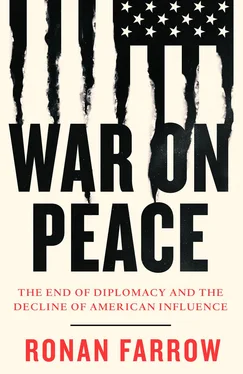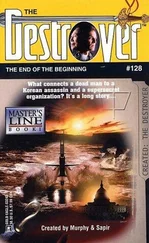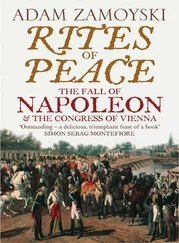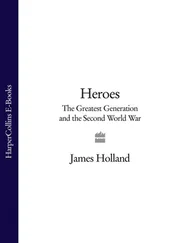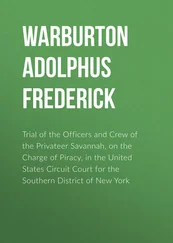
THE LAST DIPLOMATS Contents COVER TITLE PAGE COPYRIGHT DEDICATION PROLOGUE: MAHOGANY ROW MASSACRE PART I: THE LAST DIPLOMATS 1 AMERICAN MYTHS 2 LADY TALIBAN 3 DICK 4 THE MANGO CASE 5 THE OTHER HAQQANI NETWORK 6 DUPLICITY 7 THE FRAT HOUSE 8 MISSION: IMPOSSIBLE 9 WALKING ON GLASS 10 FARMER HOLBROOKE 11 A LITTLE LESS CONVERSATION 12 A-ROD 13 PROMISE ME YOU’LL END THE WAR 14 THE WHEELS COME OFF THE BUS 15 THE MEMO 16 THE REAL THING PART II: SHOOT FIRST, ASK QUESTIONS NEVER 17 GENERAL RULE 18 DOSTUM: HE IS TELLING THE TRUTH AND DISCOURAGING ALL LIES 19 WHITE BEAST 20 THE SHORTEST SPRING 21 MIDNIGHT AT THE RANCH PART III: PRESENT AT THE DESTRUCTION 22 THE STATE OF THE SECRETARY 23 THE MOSQUITO AND THE SWORD 24 MELTDOWN EPILOGUE: THE TOOL OF FIRST RESORT PICTURE SECTION NOTES INDEX ACKNOWLEDGMENTS ABOUT THE AUTHOR ABOUT THE PUBLISHER

PAKISTAN, 2010
If you ain’t speakin’ money language I can’t hang
You know your conversation is weak, so it’s senseless to speak
—DR. DRE, EVERYDAY THING (WITH NAS AND NATURE)
1 Contents COVER TITLE PAGE COPYRIGHT DEDICATION PROLOGUE: MAHOGANY ROW MASSACRE PART I: THE LAST DIPLOMATS 1 AMERICAN MYTHS 2 LADY TALIBAN 3 DICK 4 THE MANGO CASE 5 THE OTHER HAQQANI NETWORK 6 DUPLICITY 7 THE FRAT HOUSE 8 MISSION: IMPOSSIBLE 9 WALKING ON GLASS 10 FARMER HOLBROOKE 11 A LITTLE LESS CONVERSATION 12 A-ROD 13 PROMISE ME YOU’LL END THE WAR 14 THE WHEELS COME OFF THE BUS 15 THE MEMO 16 THE REAL THING PART II: SHOOT FIRST, ASK QUESTIONS NEVER 17 GENERAL RULE 18 DOSTUM: HE IS TELLING THE TRUTH AND DISCOURAGING ALL LIES 19 WHITE BEAST 20 THE SHORTEST SPRING 21 MIDNIGHT AT THE RANCH PART III: PRESENT AT THE DESTRUCTION 22 THE STATE OF THE SECRETARY 23 THE MOSQUITO AND THE SWORD 24 MELTDOWN EPILOGUE: THE TOOL OF FIRST RESORT PICTURE SECTION NOTES INDEX ACKNOWLEDGMENTS ABOUT THE AUTHOR ABOUT THE PUBLISHER
AMERICAN MYTHS Contents COVER TITLE PAGE COPYRIGHT DEDICATION PROLOGUE: MAHOGANY ROW MASSACRE PART I: THE LAST DIPLOMATS 1 AMERICAN MYTHS 2 LADY TALIBAN 3 DICK 4 THE MANGO CASE 5 THE OTHER HAQQANI NETWORK 6 DUPLICITY 7 THE FRAT HOUSE 8 MISSION: IMPOSSIBLE 9 WALKING ON GLASS 10 FARMER HOLBROOKE 11 A LITTLE LESS CONVERSATION 12 A-ROD 13 PROMISE ME YOU’LL END THE WAR 14 THE WHEELS COME OFF THE BUS 15 THE MEMO 16 THE REAL THING PART II: SHOOT FIRST, ASK QUESTIONS NEVER 17 GENERAL RULE 18 DOSTUM: HE IS TELLING THE TRUTH AND DISCOURAGING ALL LIES 19 WHITE BEAST 20 THE SHORTEST SPRING 21 MIDNIGHT AT THE RANCH PART III: PRESENT AT THE DESTRUCTION 22 THE STATE OF THE SECRETARY 23 THE MOSQUITO AND THE SWORD 24 MELTDOWN EPILOGUE: THE TOOL OF FIRST RESORT PICTURE SECTION NOTES INDEX ACKNOWLEDGMENTS ABOUT THE AUTHOR ABOUT THE PUBLISHER
THE DIPLOMAT WAS NOT always an endangered species. Those who hold the profession in reverence point out that it once flourished, upheld by larger-than-life, world-striding figures whose accomplishments still form the bedrock of the modern international order. Stories of diplomacy are a part of the American creation myth. Without Benjamin Franklin’s negotiations with the French, there would have been no Treaty of Alliance and no naval support to secure American independence. Without Franklin, John Adams and John Jay brokering the Treaty of Paris, there would have been no formal end to war with the British. Had Adams, a Massachusetts Yankee of modest upbringing, not traveled to England and presented his credentials as our first diplomat in the Court of King George III, the new United States might have never stabilized relations with the British after the war. Even in the nineteenth century, when diplomats barely made living wages and Congress saddled the State Department with a slew of domestic responsibilities from maintaining the mint to notarizing official documents, the Department defined the modern map of the United States, brokering the Louisiana Purchase and settling disputes with Britain over the border with Canada. Even after the First World War, as the nation turned inward and grappled with the Great Depression, American secretaries of state orchestrated the Washington Naval Conference on disarmament and the Pact of Paris, renouncing war—forging bonds that were later integral in rallying the allies against the Axis powers.
American politicians have forever exploited a vein of nationalism and isolationism against the work of foreign policy. One late nineteenth-century congressman accused diplomats of “working our ruin by creating a desire for foreign customs and foreign follies. The disease is imported by our returning diplomats and by the foreign ambassadors sent here by monarchs and despots to corrupt and destroy our American ideals.” He suggested confining diplomats on their return from assignments, “as we quarantine foreign rags through fear of cholera.” But great diplomatic accomplishments always cut through that hostility.
This was never more true than during World War II, when the Department adapted to the challenges of the day and gave rise to the most fruitful period of diplomatic accomplishment in American history. The State Department faced an existential crisis then not unlike the one that unraveled in 2017. “The American nation desperately needs and desperately lacks an adequate State Department at this hour of the shaping of its future,” screamed the St. Louis Post-Dispatch in 1943 copy that would splice neatly into coverage of Trump’s secretaries of state generations later. But the response was a world apart: Between 1940 and 1945, the Department modernized and reformed. It tripled its workforce and doubled its budget. It restructured, creating offices to address long-term planning, postwar reconstruction and public information in an age of fast-changing mass media.
That modernized State Department, led by a new generation of hard-charging diplomats, shaped a new international order. Those years saw the forging of a great wartime alliance between the United States and the United Kingdom, brokered by Winston Churchill and Franklin Roosevelt. The same era brought about the creation of the World Bank and the International Monetary Fund, negotiated between the United States, Canada, Western Europe, Australia, and Japan. It produced the “containment” doctrine that came to define US engagement with the Soviets for decades to come. Among the prominent architects of this era were six friends, later celebrated as “the Wise Men.” Two, George Kennan and Charles Bohlen, were members of the Foreign Service, the, at the time, newly formed professional organization for diplomats. In the postwar years, the Wise Men guided President Truman to what would become the Truman Doctrine, committing the United States to support other nations against the Soviets and to the massive Marshall Plan for international assistance to those nations. The same timeframe yielded the creation of NATO, championed by another member of a rejuvenated State Department, Under Secretary Robert Lovett.
The era of the Wise Men was far from perfect. Some of their most celebrated ideas were also fonts of blunder and misery. Despite Kennan’s warnings, for example, containment was appropriated as a rationale for the military escalation and conflict that came to define the Cold War. “As much as I love reading Present at the Creation ,” John Kerry said of Dean Acheson’s densely detailed 800-page memoir of his time at the State Department, “Maybe history and some distance tells us that Acheson and Dulles made some mistakes out of a certainty and a view of the world that we paid for a long time, certainly in some places? In my generation, Richard Holbrooke and I both knew that the supposed best and the brightest got plenty of our friends killed in Vietnam.”
Читать дальше
